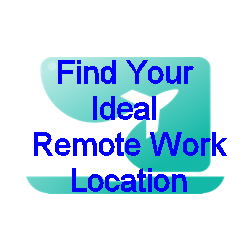While enjoying 5 consecutive days at Disney where the mercury approached 100 degrees, I got to thinking about how they keep people happy. Of the 150,000 people that were at the four parks on any given day, most seemed pretty happy. That doesn’t usually happen in an office building. I realize one is a place of business, and the other is an amusement park, but aside from the rides and the merchandising, Disney is a master of creating spaces that people want to be in. If offices are going to have a future in how we work, they probably could learn a few things from Disney.
Disney theme parks are renowned for their immersive and enchanting experiences, largely due to a set of well-established design principles. These principles ensure that every detail contributes to the overall storytelling and guest experience.
Theming and Storytelling
Offices tend to be large boxes, that hold smaller boxes (cubicles), and then one person per box. Lots of them are largely empty because we have found a better way to work. If there are boxes in a Disney park, they are well hidden. Disney creates immersive environments. Each area or “land” within a Disney park is meticulously themed to create a cohesive and immersive environment that tells a specific story. This includes architectural styles, landscaping, music, and even the scents. Offices will need to up their game to be beautiful, interesting, and have what people need to be used. Rather than trying to build offices like this, companies like Radious are starting with something interesting, and adding work elements to it. This is likely the future of work. Commercial real estate professionals and office owners are going to have to do a lot of catching up.
Attention to Detail
The last office I worked in was originally built for an insurance company that moved to a new building. It was an open-plan sea of cubicles. Sometime around 2012 they repainted and took down all the artwork. They never put it back up. They have generously replaced the carpeting and the furniture from the 1980s twice to create an equally sterile cubicle farm.
Disney on the other hand has attention to detail at every corner. It doesn’t cost that much more, but it makes spaces interesting. Disney has subtle Mickey Mouse shapes hidden throughout the parks, adding an extra layer of detail and a fun scavenger hunt for guests. From the design of trash cans to the style of benches, every element is carefully designed to fit the theme of its surroundings. People want to be in interesting spaces. Even if it’s posters, people want to feel like they are in a specific space they can connect with. Not just a storage unit for workers.
Visual Storytelling
This doesn’t usually work in an office setting unless you take a broader perspective. It’s not just the office, or the building itself, it’s the ecosystem that it all exists in. Cities need to work as both a functional system and a visual system for the people using them. Disney often does this with forced perspective. This technique is used to manipulate human visual perception, making buildings and structures appear taller or larger than they actually are. A classic example is the Main Street, U.S.A. buildings, which use forced perspective to make Cinderella Castle appear more majestic. Cities can do this with the addition of green spaces, art, etc. Disney also created visual icons that draw guests into different areas of the park. Examples include Cinderella Castle in Magic Kingdom and the Tree of Life in Animal Kingdom. Think about how this might work in cities that don’t have an Eifel Tower, an Empire State Building, or a Washington Monument.
Flow and Circulation
We need to rethink how people move through cities and the buildings they work in. The central business district is dead. The office as we know it is dead. It’s time to create new models. Most European cities have polycentric designs. It’s a natural evolution where many hub and spoke-based centers come together. Many Disney parks use a hub-and-spoke design, where a central hub (like the castle) connects to various themed lands via spokes. This layout helps manage crowd flow and makes navigation intuitive.
In cities, the transition between these areas is often forgotten and the home for cheap apartments, unsavory businesses, and crime. In Disney parks, transitions between different themed areas are carefully managed so that guests move seamlessly from one environment to another without a jarring change. Cities can do this by reclaiming empty lots of greenspaces and parks and cleaning up buildings in border areas. We want the same thing ineffective office settings. We don’t just want rows and rows of cubicles punctuated by an occasional conference room and manager’s offices in the corners. We want art, we want nice views, the smell of fresh muffins, etc, etc.
Guest Experience
Office owners tend to not think of their occupants as guests, but that is the mindset that is going to ensure the survivability of offices in the future. Like it or not, they are in the hospitality business. Doors that don’t close, unpredictable heating and cooling, and clogged toilets are not likely to be tolerated in the future. Disney parks are known for their cleanliness and meticulous maintenance, contributing to a positive guest experience. After 4 years of remote work, we know people have a choice of where they work. If people need to come to an office, it needs to be a good experience.
Safety and Accessibility
The parking area I used to go to was just a couple minutes’ walk from the office, and it was never safe. Less so after they stopped paying for the security guard. There were numerous break-ins. Cars were frequently vandalized and I accidentally walked through an active shooter scene coming back from lunch one day. I don’t miss it. But it’s an area that most businesses don’t take seriously. When something bad happens at Disney it makes the news because it happens so infrequently. Attractions and park layouts are designed with guest safety as a top priority. This includes clear signage, accessible pathways, and ride safety measures.
They also focus on accessibility which might be a requirement, but it’s still an afterthought in most commercial buildings and cities in general. At Disney parks, efforts are made to accommodate guests of all abilities, with accessible attractions, services, and facilities. And when the temperatures get too hot, there are plenty of air-conditioned options to check out.
Innovation and Technology
Historically the office has not been a place for innovation. Sure we get new software and hardware once and a while, but as far as how the office functions, it’s pretty static. Every time I go to Disney, there is something new. As an example, Rise of the Resistance at Hollywood Studies takes the visual aspect of rides to a new level. At Disney Springs, the drone show is unlike anything you have ever seen (except maybe another drone show). Disney often uses cutting-edge technology to create innovative and immersive attractions, such as animatronics, virtual reality, and sophisticated ride systems. They also incorporate interactive elements into attractions and experiences engage guests and make the experience more dynamic. What sort of technology can we add to the office experience to improve it and make it more interesting for the people who work there? Virtual reality design tools, office-to-office portals, 3D printing, insert your choices here.
Environmental Design
Environmental design and environmental impact are key in the minds of many people when they weigh coming into the office or not. Even empty office spaces have a carbon impact although most people focus on the environmental and cost impact of commuting. And let’s face it, most offices are not the greenest of spaces. I’ve seen many offices ban plants. The logic has usually been around then attracting bugs, but a spritz with a peroxide solution will take care of the problem. Disney uses plants extensively in all their spaces. Extensive use of landscaping not only enhances the aesthetic appeal but also contributes to the thematic storytelling. For instance, lush jungles in Adventureland create an adventurous atmosphere. Disney is also increasingly incorporating sustainable practices into park design and operations, such as energy-efficient systems and eco-friendly materials.
By adhering to these principles, Disney theme parks create magical experiences that transport guests into fantastical worlds, ensuring that every visit is memorable and enchanting. While we probably won’t ever see an office described as enchanting, it’s not a bad aim to ascribe to.


